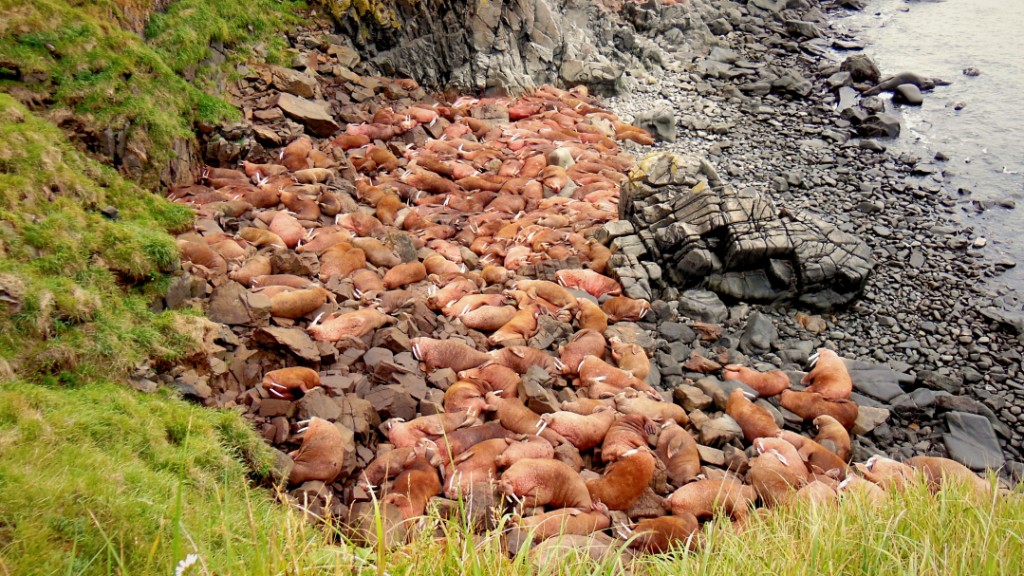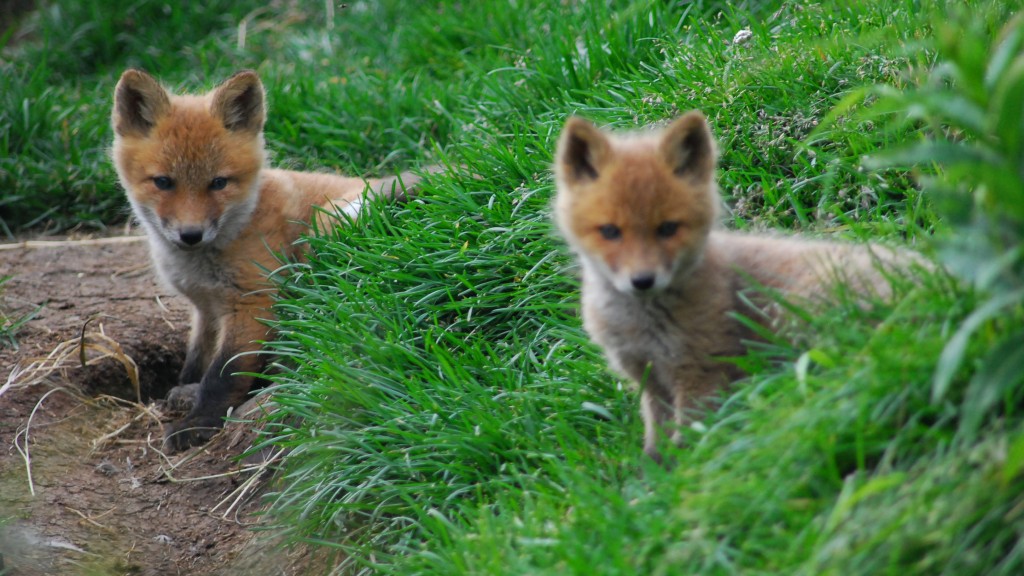Our guides for the Walrus Cam “Summer of Blubber”, Alaska Department of Fish & Game staffers Ben Histand and Ryan Morrill are giving us a well-rounded view of Round Island and its inhabitants of summering walruses. They blow apart what we think we know about these marine mammals and other creatures of Alaska’s Bristol Bay:
Says Ryan, “The world of arctic marine mammals is still widely unknown to scientists, let alone the public. Most visitors have misconceptions that walrus eat fish in the wild, and when told that their diet consists mostly of clams and other marine invertebrates, they often think their tusks are used as clam rakes. I would consider myself a walrus neophyte and am completely indebted to the life work of Francis “Bud” Fay who wrote Ecology and Biology of the Pacific Walrus, the unabridged bible of walrus research. It’s great to go through his report with visitors who ask a variety of questions about Odobenus rosmarus divergens. Having these cameras present on the island with the capabilities to broadcast their images throughout world is really exciting, allowing for an increased number of people to be exposed to these creatures.”
Ben adds, “Most people are surprised to learn that all the walruses on Round Island are male. In the winter months, Pacific walruses of both sexes tend to congregate in the central Bering Sea, near the edge of the pack ice. In the summer, many males remain in the central and southern Bering Sea, hauling out at Round Island and several other sites, while other males, and nearly all females and calves, migrate north to the Chukchi Sea. So far there’s no clear explanation for why males and females have such different migratory patterns.
Walruses spend lots of time in cold water. During the summer they stay out at sea for days at a time, diving and feeding, before returning to land to haul out. When they first climb out of the water, they are often very pale, because their body has redistributed blood to keep their core warm. On a sunny day, once out of the water, they soon turn bright pink, like pretty much all Alaskans when they go to the beach.”
But the appeal of Round Island comes not just not from beaching walruses, as Ryan concludes, “More often than not, visitors come for the marine mammals and fall in love with the small, red, terrestrial mammals who also reside on the island. There are a number of fox dens here in the sanctuary, living well off seabirds, rodents, and insectivores. These foxes are habituated to humans but not conditioned by them, making for quite an interactive experience. Fox kits start appearing in early June and rival the cutest ‘anythings’ in the world. I’ve witnessed seven campers posted up around a fox den near our cabin, oblivious to the walrus and sea lions behind them, just to get another view of the five or six little Vulpes vulpes tearing around the cabin.”




